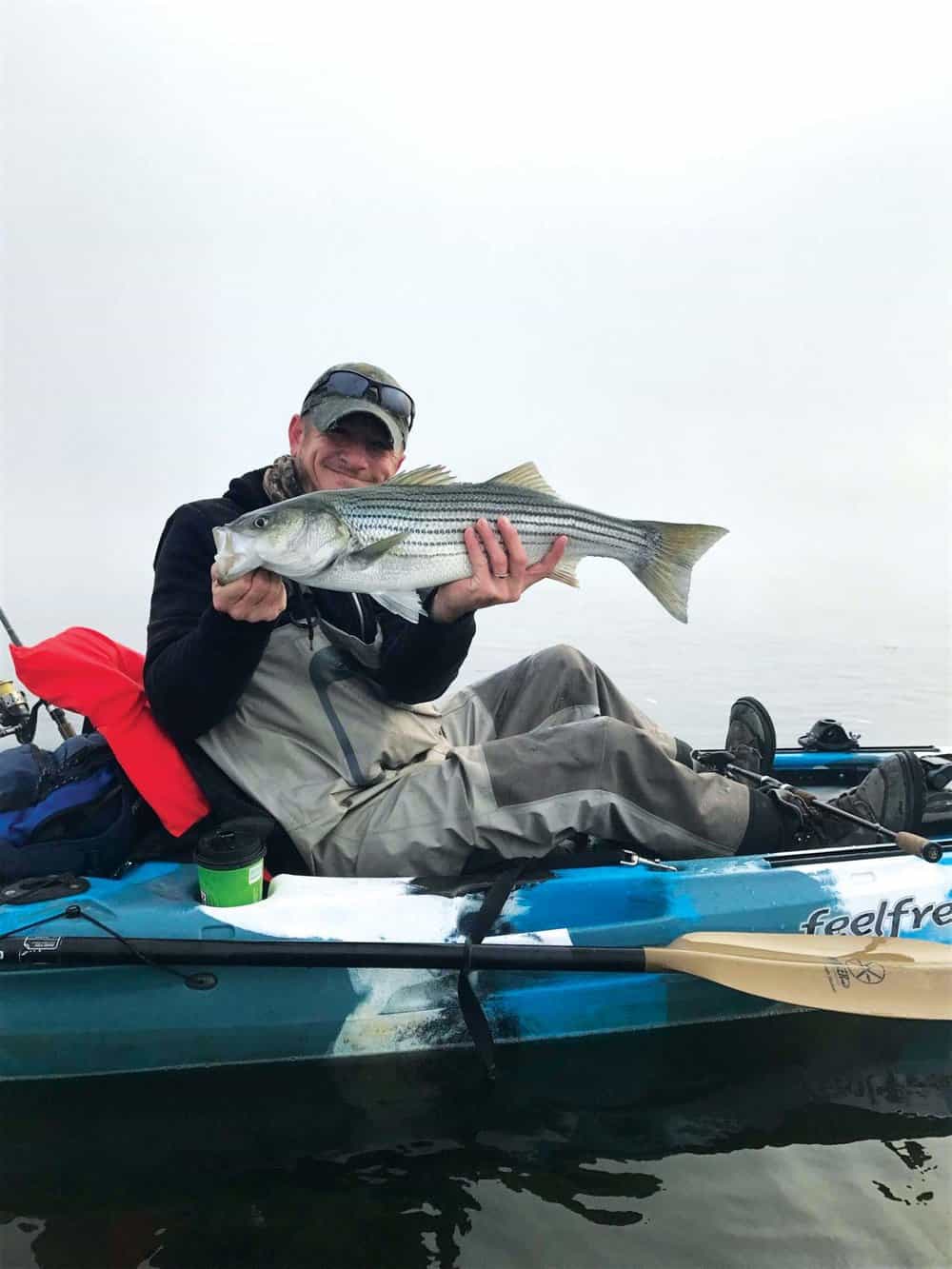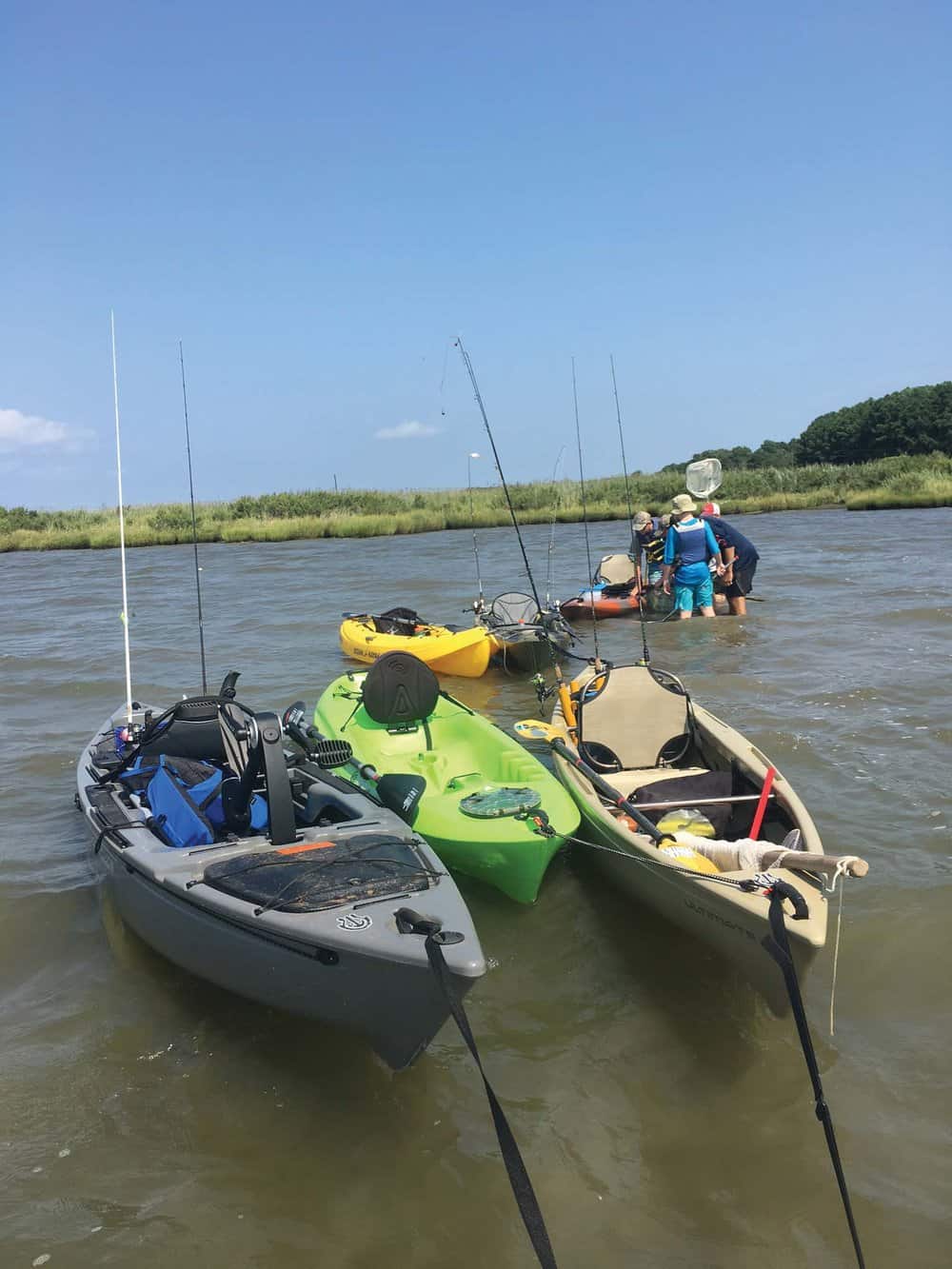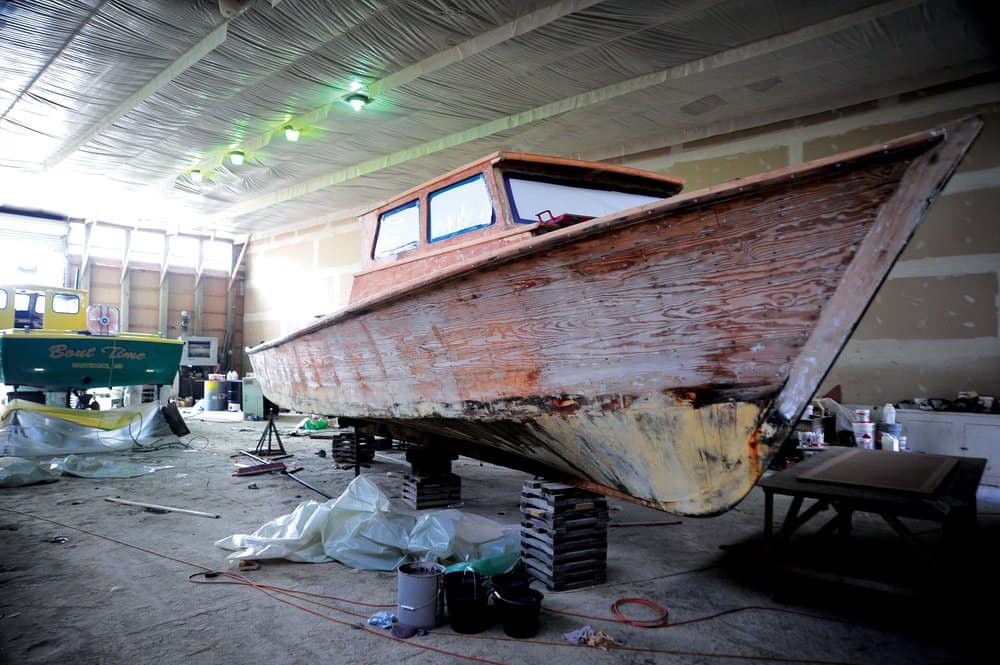“It’s lovely to live on a raft. We had the sky, up there, all speckled with stars, and we used to lay on our backs and look up at them, and discuss about whether they was made, or only just happened—Jim he allowed they was made, but I allowed they happened; I judged it would have took too long to make so many.”
—Mark Twain, The Adventures of Huckleberry Finn
Photo by Chris D. Dollar
The closest I may ever get to this description offered by my literary hero is on my kayak.
I count myself extremely fortunate to live so close to a place where “heaven and earth never agreed better,” as Capt. John Smith put it. Our Chesapeake is a broad, diverse estuary of innumerable edges, nearly 200 miles long with more than 11,000 miles of tidal rivers and creeks just begging for exploration. Swimming beneath these inviting waters are a myriad of game fish that can provide such a trove of angling opportunities that if I quit my job today and spent the remainder of my years on this spinning blue orb to pursue them, my body would betray me long before I could fish and paddle all that water.
Put another way, the Chesapeake and our coastal bays are tailor-made for kayakers, especially kayak anglers. Here are some ideas:
As a kayak outfitter and guide for the past decade, I’ve developed what I call the “Three-Quarter Rule” where you consider the areas you will kayak-fish 75 percent of the time, instead of all of the places you may dream of going. We all imagine tangling with a 45-pound cobia off Sandbridge, but the reality is most of us never will, and we’d be tickled silly to pull a five-pound puppy drum or speckled trout from a verdant underwater meadow.
Luckily, the past 15 years has arguably been the Golden Age of Kayak Fishing. Long gone are those days when I’d take a perfectly good tandem kayak, rip out the back seat and go nuts with a screw gun, cable ties, and PVC tubing. Kayaks have evolved into true fishing machines, spawned from the factory pre-rigged with all of the accoutrements any angler could want or need.
Rod holders, storage compartments, and comfortable seats are now standard. Pedal-drive yaks are now offered by most major companies.
A quality, basic, fishing-ready, paddle-powered kayak can be had for under a grand. For pedal-drive boats, the cost begins around $2,000.
Despite vast improvements and the fact that much of the guess work of rigging for fishing has been removed, my universal rule that there is no such creature as the perfect boat still applies, and perhaps even more so to kayaks. The trick is to pick one that comes closest to meeting most of your needs. That’s different for each of us, so it’s important to manage your expectations.
For example, no doubt you can fish Tangier Sound in a ten-footer on a bluebird day with not a ripple on the water. But that’s big water down there, and conditions can deteriorate in a hot minute. In my experience, a kayak of at least 13 feet is required. Conversely, if you plan to mostly paddle the tidal creeks feeding Fleets Bay or the Chester River, a 10- or 12-footer should do the trick. Of course, you may soon discover you need more than one kayak.
Sit-in or sit-on-top? Most modern fishing kayaks are sit-on-top models, and with good reason. Of course, you can catch a fish from a touring style kayak (if I had five bucks for each time I was reminded of that). But, if fishing is your primary goal, then the sit-on-top version is preferable for a number of reasons: It’s more comfortable (the framed and hi-low seating options are really nice), easier to get in and out of; carries more gear and is better suited to casting.
Your next consideration is what material your fishing yak should be made of. Most fishing yaks on the water today are constructed of rotomolded polyethylene. Some are of better quality and craftsmanship, so ask about that process before forking over your money. Also you should test one out on the water.
Rotomolded yaks are made of little plastic beads, which are poured into a hollow metal mold that is then heated and rotated in an industrial oven. After the yak is removed to cool, out pops a kayak that requires only light hand-finishing and appropriate outfitting with rod holders, hatches, or whatever else the design calls for.

Rotomolded kayaks are more resistant to scrapes, scratches and other insults inflicted upon them by a rough-and-tumble angling public than fiberglass or wooden boats. And it’s no small thing that they are also the least expensive yak compared to those made from other materials. True, plastic yaks are more efficient to fish from, but they are relatively heavy. In fact, most modern fishing yaks longer than thirteen feet do not lend themselves to car-topping, in my opinion. Some of the larger, pedal-driven kayaks can weigh more than 100 pounds, and must be trailered or slid into the back of a pickup truck bed. This should be another key consideration in your decision-making.
Another good choice is a kayak made of impact-resistant thermoformed ABS plastic. This process entails melting sheets of the material to form separate deck and hull parts, which are then joined at the sheerline with industrial strength tapes and adhesives. If light weight and a glossy look are your priorities, check out an ABS kayak, but they aren’t as durable, and they usually cost more than a rotomolded yak.
Composite kayaks (fiberglass, carbon fiber, Kevlar or a blend) and wooden kayak kits are viable options. Since both are out of my wheelhouse, I’ll leave it to another writer to discuss the merits.
Once you’ve settled on the right fishing kayak, the fun part comes—the gear. Aftermarket kayak accessory companies have sprung up like daffodils in the wake of the sport’s burgeoning popularity. From telescoping landing nets and tools like fish lippers to fish-finders and specialty paddles, your choices are many. So choose wisely. Don’t skimp on the paddle. A lightweight fiberglass or carbon fiber, wide-bladed paddle of a minimum 250cm is my recommendation.
It never pays to go on the cheap in the safety category either. I always wear my life vest, either my old standby Type III fishing vest, or my newer Type V inflatable, which is more comfortable. I also never leave land without my smartphone and hand-held VHF marine radio. The phone slips into its floating waterproof sleeve and the VHF, which floats and has a range of about five miles with a good battery life, is secured to my PFD. If your budget allows, and you plan to fish solo in quasi-remote areas, then a personal locator beacon is worth the investment. A simple push of a button quickly and accurately relays your position to the search and rescue network within minutes should things go south. Always know your limitations, dress for the worst weather possible, and file a float plan.
Acquire as much knowledge as possible about fishing a new area to have a safe and fun outing. Online resources and clubs can be excellent resources. Top anglers recommend that you target small waters and small fish first—20 inchers, then 30s, and the trophies. If you try and bolt past these incremental steps, you won’t learn anything, and you might unintentionally harm a big fish.
Wrestling fish to your gunwale is a combination of experience and proper technique. Start with properly loading your kayak by getting all gear and rods secured and within easy reach. Also, know and respect your capabilities and conditions. And oh-yeah, forget your Roland Martin impression. Yes, you want to drive the hook home once the fish has taken it, but in a kayak, it’s not only ineffective to mimic the pro bass guys, but you also might end up in the drink. Quickly move your rod backwards after you feel a strike, and keep your elbows against your ribs, then drive the hook point home.
For the basics on kayak fishing you’d be hard pressed to beat Ric Burnley’s book, The Complete Kayak Fisherman. If you’re looking for video tips packed with adventure, check out the popular DVD series produced by Kayak Kevin Whitely. These Virginia anglers have blazed a trail for serious yak anglers by creating new techniques and fishing unknown areas.
Paddling long distances, casting and being outside for hours can be physically taxing, especially if you’re new to the sport. If you think you can paddle 10 miles from scratch and fish all day, then with all due respect, you’re delusional. Just launching and loading a fishing kayak can be a workout for some of us. I now do yoga that focuses on my core and lift weights as well as ride a bike in an attempt to stem the ever-pressing tide of time.
I’d never presume to script your kayak angling adventures, but for me, few joys match the adrenaline rush of catching a quality fish from a kayak. So, I’ll offer one of my memories:
A fading summer sun cradled radiating brilliant hues of reds, purples, grays and blues on its way to the other side of the world. I was lost in thought, sitting peacefully in the gloaming, reflecting upon my place in the world. For what seemed like the hundredth time, I opened the bail, watched the plug arc into the twilight, and listened for the plunk as it hit the water. Then all hell broke loose.
That’s the magic of kayak fishing for me.




